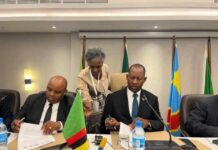Last month, 32 cattle from Chief Musokotwane’s area died from suspected poisoning after they had diarrhoea as well as frothy blots from their noses.
Twenty-eight animals died in Muchije Village in Chief Musokotwane’s area while four died at Inonge Village within the same chiefdom.
Dr Bwalya said in an interview yesterday that the disease had since been contained as no more deaths had been recorded after the intervention of veterinary officers.
The surviving animals received treatment and there had since been no deaths recorded.
“We had no other animal getting sick or dying from the time 32 cattle died from suspected poisoning last month.
“We told the affected farmers what to do with their surviving animals and they have been following our instructions,” Dr Bwalya said.
She, however, said her office was still waiting for laboratory results from Lusaka to ascertain the actual cause of death of the 32 animals.
“We haven’t gotten the laboratory results yet but we are expecting the results before the end of this week,” she said.
Blood slides from the carcasses were last month taken to the University of Zambia and Central Veterinary Research Institute in Lusaka for analysis.
Meanwhile, Dr Bwalya said most farmers were adhering to the ban on the movement of pigs and pork products in Southern Province.
“On Tuesday, we went to Zimba District where most pigs used to go and we were told that the trend has stopped which means that the ban is working,” she said.
The Ministry of Agriculture and Livestock recently banned the movement of pigs and pork products in Southern Province to contain the spread of African Swine Fever.

 JOIN DRIVERN TAXI AS PARTNER DRIVER TODAY!
JOIN DRIVERN TAXI AS PARTNER DRIVER TODAY!











